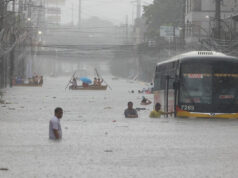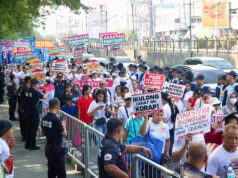BPI sees prolonged ‘W-shaped’ recovery for PHL, lagging region
THE recovery is expected to be prolonged and “W-shaped” in 2021, strengthening the case for more fiscal stimulus, according to Bank of the Philippine Islands (BPI) Lead Economist Emilo S. Neri, Jr.
“Production is responding positively to easing of quarantine measures. But the country’s recovery may continue to fall behind our ASEAN neighbors if reopening remains slow and the fiscal response remains too conservative,” Mr. Neri said in a statement.
A W-shaped recovery, so called because of the pattern traced by the growth line when charted, points to an unsteady pattern of expansion and contraction. In contrast, a V-shaped recovery indicates a sharp rebound after a sharp fall, while a U-shaped recovery describes a prolonged bottoming-out period before a recovery takes hold.
The International Monetary Fund policy tracker estimates that fiscal packages implemented by the Philippines are equivalent to 3.9% of gross domestic product (GDP). Meanwhile, Thailand has rolled out packages worth at least 9.6% of GDP, Indonesia 4.4%, and Malaysia 4.9%.
The P4.5-trillion budget bill, which contains many economy-stimulating provisions, has been transmitted to Malacañang and is awaiting the signature of President Rodrigo R. Duterte.
Meanwhile, the peso is likely to strengthen while interest rates will rise, but both movements will be gradual and manageable, Mr. Neri said.
The peso has been strengthening towards the P48 to the dollar level in recent weeks.
Gross domestic product declined 11.5% in the third quarter. The year-to-date performance was a decline of 10%.
The government expects the economy to contract by between 8.5% and 9.5% this year before recovering next year with growth of between 6.5% and 7.5%.
Meanwhile, the overnight reverse repurchase, lending, and deposit facilities are currently at 2%, 2.5%, and 1.5% after the central bank slashed rates by a total of 200 basis points this year.
“Inflation risk is low but supply disruptions need to be watched closely,” Mr. Neri added.
The consumer price index rose 3.3% in November, the fastest pace since 3.8% reading in February 2019. The Bangko Sentral ng Pilipinas expects headline inflation to average 2.6% and 3.2% for 2020 and 2021, respectively — all within the 2-4% target band. — Luz Wendy T. Noble



